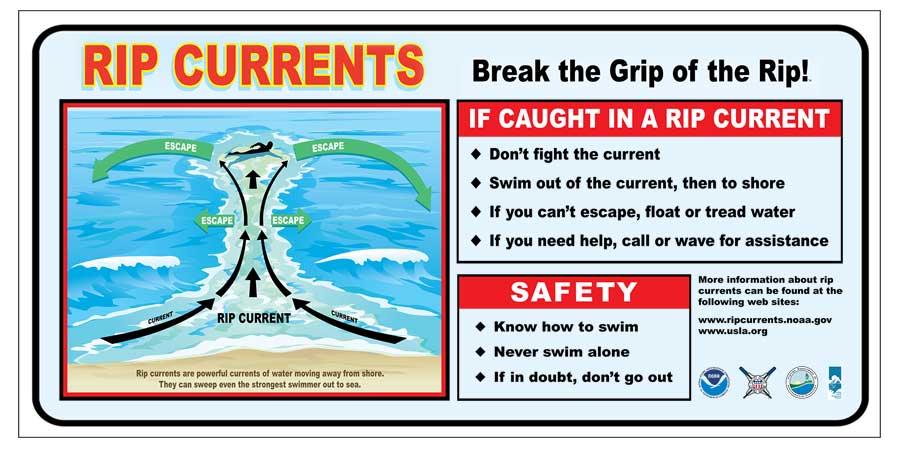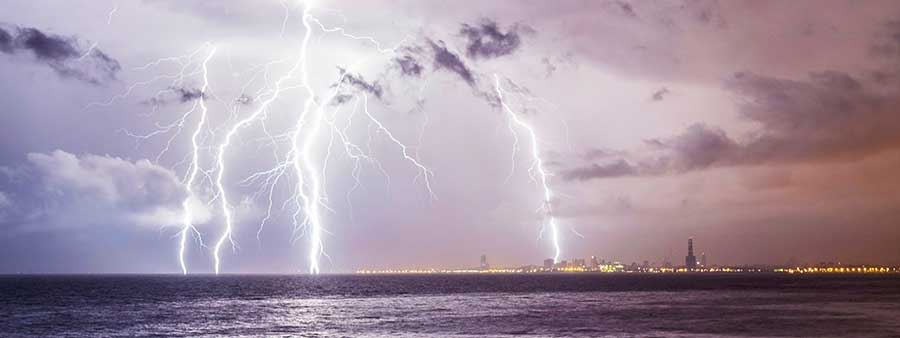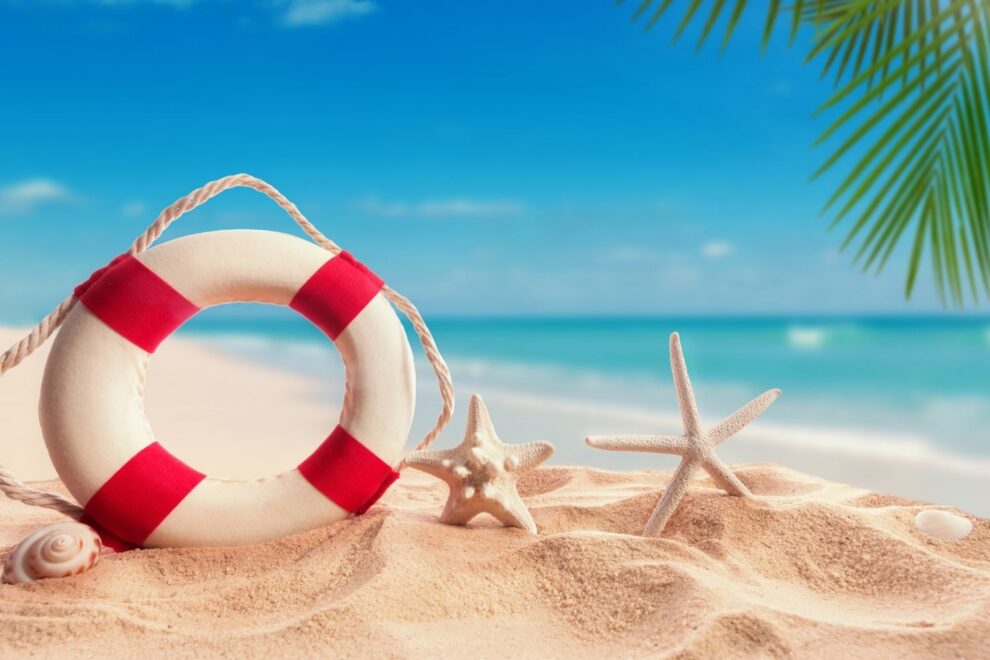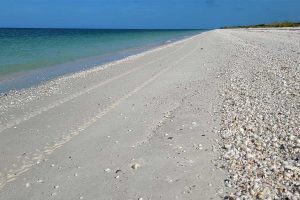Florida Beach Flags, Rip Currents, Marine Life and Safety Tips
When at any beach in Florida, it is important to understand Beach Safety. Florida is known for rip currents, lightning, sharks, jellyfish, and sunburns. Being prepared can not only save your life, it can protect you from painful occurrences.
Some important tips for safety are:
#1 pay attention to the beach flags
#2 use the buddy system and don’t swim alone
#3 swim in areas where a lifeguard is present
#4 always be aware of the potential dangerous sealife that exists
#5 stay updated on local algae, red tide and other potential water hazards
#6 watch for storms and lightning
#7 stay hydrated and wear and re-apply sunscreen often
Beach Flags
It is vitally important to pay attention to the beach flags anytime you go to the beach or intend to swim in the waters. Florida’s statewide flag system informs beach goers of the current ocean safety conditions.
Don’t ignore these flags!
Florida’s Beach Flag Warning system is mandated by the State of Florida stating that beaches and coastal areas display uniform warning and safety flags at public beaches to increase public safety and inform the public of risks. The Beach Warning Flag Program was legislated in 2002 and then standardized in 2005.
The flags are flown in different colors at the entrance to all public beaches in the state of Florida. Each color represents the water safety conditions and can change throughout the day as the tide and surf conditions change. They are easy to remember similar to a traffic light. Red is stop, Yellow is caution, and Green is good to go!
Here are the warning flags that everyone needs to be aware of:

Double Red Flags – Don’t go in the water! Seriously, DON’T GO IN THE WATER! The water conditions are high risk and unsafe and the water is closed to all swimmers and surfers. You may also be issued a fine if you go in the water and ignore a double red flag. While the seas may not look so rough, strong rip currents can exist that cause drownings. That is why the flags exist! To save lives. So listen!

Single Red Flag – Don’t go in the water for most people! The water conditions are hazardous and strong currents exist. In Florida, the rip currents can exist in what seems to be calm waters. The red flag lets beachgoers know that these dangers exist so beware and only go in the water if you have a float or understand the rip currents.

Yellow Flag – Swim at your own risk and with caution. The water conditions are moderate with a surf and/or currents. Yellow flags are there for you to determine yourself if you feel comfortable swimming or playing in the water. Note that yellow flag days vary from a milder light surf to a medium surf.

Green Flag – Enjoy the water! The water conditions are good, the ocean is calm and good for swimming and playing. But note, when you are in the coastal waters in Florida, there can always be dangers, so always use caution and understand that the ocean conditions can change quickly.

Purple Flag – Watch out for dangerous marine life! Stinging marine life such as man o’ war, jellyfish and stingrays have been spotted.
No Flag – the absence of Flags do not mean safe water. Only the main public beach access points are required to have flags posted. Always check the flags in your area before entering the water. The flags are posted daily online either on the cities website or their facebook page and most can be found instantly with a google search.
Rip Currents, also known as Rip Tides

Rip currents are strong ocean currents that can occur on any beach in Florida. Sometimes they are referred to as undertow or rip tides. It’s important to be aware of them and how to react if you happen to get caught in one.
Rip currents are powerful underwater currents in the surf zone that occur when water near the shoreline gets pulled quickly back to the ocean from a break in an underwater sandbar or underwater channel. These powerful currents cause more drownings from those who get caught in them trying to fight the current. Even the strongest swimmers can’t fight a powerful rip current.
How to spot and avoid Rip Currents
Rip current locations can sometimes be spotted, but not always. And it’s important to note that ocean and beach currents can change rapidly and shift to other locations.
Some things to watch for:
Low Tides, Beach Flag not green, rougher tides, windier days – all of these bring stronger currents and it is important to notes that swimming, surfing or playing in the waters should be done with caution as rip currents could always be present. They may not always be strong enough to be dangerous, but the water always has to get back out to sea and the currents form to accomplish that.
Deeper darker colored water – Areas where there is deeper water between the shoreline and a sandbar with a darker, deeper area next to it that stretches out to sea. The area between the sandbar and shoreline are where the water gets trapped and finds a way out typically through an underwater current. If you are swimming out to a sandbar, be aware of this middle deeper area and the pull of the current.
Fewer breaking waves – Areas where there are not as many breaking waves can also be an indicator of a rip current. This is an area that some people may think is better to swim and play in because it seems calmer than the breaking waves area. Understand that if the waves are not breaking there, it may be because that is where the water is being pulled in the other direction out to sea so it is likely less safe. The water breaking is bringing the water to the shore and that water always has to get back out to the sea and the areas where the waves are not as prominent can be where that occurs.
Unusual rippled surface areas or patchy areas beyond the surf where the water seems to be stirred up can also indicate a rip current so avoid these areas.
Rip currents in Florida often can’t be spotted and can exist even when the waters are calm, so it is important to know what to do if you get caught in one.
What to do if you get caught in a Rip Current
While it may frighteningly pull you away from shore, there are some important tips you should do. First and most important, don’t try to panic or try to swim against the current straight back to shore. This is what causes more drownings from people who get caught in them. Go with the current and try to guide yourself by swimming sideways parallel to get out of it. If you are still being pulled out to sea, turn and float on your back keeping your face above water. Try to relax and not panic. The rip current will pull you past the sand bar and dissipate allowing you to be released from the pull where you can swim left or right parallel to the shore and then swim or ride the waves back into shore.
Check out this Rip Current information video by NOAA’s National Ocean Service
Jellyfish
Jellyfish can appear at any time in Florida. The most common species of Jellyfish in Florida are moon jellyfish, mauve stingers, box jellyfish, and the man-o-war.

Jellyfish can be unpredictable due to currents and weather patterns as they tend to float and drift with the ocean currents. Jellyfish are hard to spot in the waters because they are mostly clear. Their tentacles are what sting and some jellys have up to 10 foot long tentacles that can sting you without ever seeing the jellyfish. Always check the flag at the beach. If there is a purple flag, it means there are likely jellyfish or other dangerous marine life in the water. Trust the flags and any warning signs posted at the beach but also note that the flags may not always show purple if the jellyfish haven’t been spotted or reported. Remember that anytime you are in the ocean and beach waters of Florida, there is a potential for Jellyfish being present.
The Jellyfish Sting
Many people in Florida know that the less color a jellyfish has, the less bad a sting will be. Most are harmless, some cause mild rashes, while some can cause severe stings and extreme allergic reactions that can be life threatening.
What to do if you get stung
If you get stung, do not use fresh water to clean it. And urine to help a jellyfish sting is a myth. Vinegar works best to help alleviate the sting. Carrying a spray bottle of vinegar in your beach bag is a good practice. Pour or spray the vinegar on the sting and avoid rubbing it. If you don’t have vinegar, you can rinse it with sea water. After the pain has subsided you can gently scrape away any tentacle cells on the skin with something other than your hands as it is best to avoid hand contact. After you get home, you can apply a hydrocortisone cream or antihistamine to alleviate any residual itching. However, if you have severe swelling or pain, trouble breathing or feel any allergic reactions, go to the emergency room immediately.
Stingrays
There are many types of rays in Florida Waters, but the one that is concerning is the stingray. Stingrays are typically gentle and docile burrowing under the sand in shallow waters. They hang out in the area just off the shore typically where there is a small drop off, 3-10 yards off the shoreline. The problem is, this is the area where most people walk and kids play. If they are disturbed by activity or stepped on, they will lash their tail with the bony barb at the base, as a defense. And this can be quite painful.
The Florida stingray season is from April through October, though they frequent the panhandle around October or November. However, they can be found at any time of the year.
In Florida, we do the Stingray Shuffle when walking in the water. The Stingray Shuffle is when you drag your feet rather than lifting and stepping. This alerts the stingray that you are coming and they swim away to avoid you. While this is not guaranteed to work, it will help reduce the risks of stepping on one. Wearing water shoes is also a good idea to protect your feet when in the shallows.
If you do get stung by a stingray, the sting may be a sharp pain that can last 1-2 hours. Intense pain at the puncture site is caused by the venom from the stinger. The wound may swell with a blue or reddish color. Most stingray stings require immediate medical attention. To treat it right away, flush the wound with fresh water and use tweezers to remove the stingers. Antibiotics may be necessary so see a doctor right away.
Sharks

There’s a reason Florida has been named the shark bite capital of the world. Of the 64 unprovoked shark attacks worldwide in 2019, Florida had 21. That’s half of the U.S. and about a third of the total shark attacks Worldwide that occur in the Sunshine State. The good news is, Florida rarely has a fatal shark attack. The sharks in Florida are typically smaller and often will bite and let go when they realize the person is not a fish.
2019 Yearly Worldwide Shark Attack Summary
All of the reported attacks in 2019 occurred on the east coast of Florida with the majority in Volusia County, home to New Smyrna Beach which is labeled the Shark Attack Capital of the World. Volusia County reported 9 shark attacks, Duval County reported 5, Brevard County reported 2, and a single occurrence was reported in Broward, Palm Beach, Martin, Nassau, and St. Johns counties.
International Shark Attack File: Florida
To avoid shark bites, understand that you are in the sharks habitat when you enter the water. There is a popular expression in Florida that when you are in the water at the beach, chances are there is a shark within 20 feet of you at any given time. Sharks are looking for fish so if you see pelicans and other seabirds diving down for food, chances are a shark could be doing the same. Anywhere someone is surf fishing, there is a chance of a shark being attracted to the area. So avoid swimming near surf fishers. Sharks lurk in the surf zones and are attracted to splashing and thrashing. Surfers are most at risk as are those playing and splashing around. It is best to be in groups of people and not to swim alone as sharks most commonly attack solo swimmers and surfers. Avoid swimming when visibility is low. And avoid swimming if you have a cut or are bleeding as sharks can sense blood and it attracts them to you.
The Sun, Sunburns & Protection

Ever wonder why when you go to the beach, you tend to burn more easily? The white sandy beaches reflect the UV rays from the sun and amplify the effects. And swimming in the water washes away even the best waterproof sunscreens during the day and need to be reapplied to keep your skin protected.
Unprotected skin can burn quickly at the beach, even on a cloudy day. The sun can cause irreversible damage to the skin and may cause skin cancer in the future. And no one wants to feel the pain of a sunburn. Keep your skin healthy and happy by wearing a good high-SPF waterproof sunscreen. And consider hats and coverings to further protect the skin.
The sun can also affect your eyes over time. The bright sunshine can cause cataracts to form to protect the eye. Sunglasses are recommended for those with light colored or sensitive eyes.
Dehydration

Always be sure to have fresh water or hydrating drinks when you are on the beach for more than a couple hours. While you may not feel the sun and heat dehydrating you because of the ocean breeze, you may still get dehydrated. So drink up the water and stay healthy.
Lightning

Lightning Storms are a frequent occurrence during the summer months in Florida and lightning is a serious hazard to those caught out in the storm. If you are at the beach when a lightning storm approaches, go to an enclosed building, not a pavilion or picnic shelter, or go to your car with a hard top. Many storms in Florida come and go quickly so be prepared.
Water Quality: Bacteria, Algae, Red Tide
Florida Department of Health and the Florida Fish and Wildlife Conservation Commission monitor bacteria, algae and red tide occurrences in their Healthy Beaches Program. The monitoring tracks bacteria levels, algae and red tide occurrences.
High levels of bacteria in the water can cause disease, infections and rashes.
It is a good idea to look for signs at the beach and be aware of entering the waters if bacteria levels are high.
Florida Red tides are monitored here. When a red tide is occurring, it is best to avoid the beach as it can cause irritation, burning the eyes and even respiratory irritation.
In Summary, there are many dangers that lurk at the beaches, most of them are extremely rare. 99.9% of the time you are at the beach in Florida, you are not going to encounter these dangers. However, they can happen, they do occur, and if you come prepared and listen to the posted warnings and watch for flags that show potential dangers, you can keep yourself safe.











